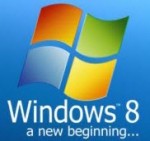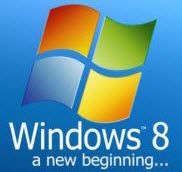 I’m sure you’ve heard all the ruckus surrounding the Start Screen in Windows 8 and probably fallen into the “I must have Windows 8” or “They’ll have to pry Windows 7 from my cold dead hands” camps. Either way you’ll hopefully agree with me when I say that the heated discussions regarding the appearance of Windows 8 has far overshadowed the discussions about what’s going on under the hood in Windows 8. What’s new? Aside from the omission of a Start Menu what does Windows 8 have to offer you?
I’m sure you’ve heard all the ruckus surrounding the Start Screen in Windows 8 and probably fallen into the “I must have Windows 8” or “They’ll have to pry Windows 7 from my cold dead hands” camps. Either way you’ll hopefully agree with me when I say that the heated discussions regarding the appearance of Windows 8 has far overshadowed the discussions about what’s going on under the hood in Windows 8. What’s new? Aside from the omission of a Start Menu what does Windows 8 have to offer you?
While most of the naysayers loudly proclaim that Windows 8 is simply Windows 7 with a new user interface it isn’t exactly true. Microsoft went to great lengths to make the Windows 8 infrastructure better. Faster start up and shutdown, better security, and improved ease of use for the average user are forefront in Windows 8. I couldn’t possibly mention every single change, but there are a few that really stand out. Here are the big ones!
Windows 8 Secure Boot
You may have heard the term BIOS (Basic Input Output System) before. The BIOS resides in non-erasable memory on a computer’s motherboard. BIOS is the first code to run on a computer when the power button is pressed and everything spins to life. BIOS in it’s most basic form controls and configures hardware before loading your operating system. Without BIOS a computer wouldn’t know what hard drives were connected, what speed to speak to your memory, or information about other hardware connected to your computer. You may have seen your screen flicker and white text appear on a black screen right before Windows begins loading – that’s the BIOS. It’s been around for a loooong time, is showing it’s age, and as computer hardware capability surpasses the abilities of BIOS it has become the limiting factor in the computer equation.
Hardware designers saw this limit approaching and devised a replacement called UEFI (Unified Extensible Firmware Interface). UEFI is much more robust and expandable than was our old friend the BIOS and has become mainstream – appearing in most computers manufactured since 2011. One such addition is a feature called Secure Boot. Secure Boot requires the operating system it will load at boot time to be signed, which means that the OS files must be trusted. Secure Boot prevents malware and other unwanted software from overwriting or changing key files in the bootloader or operating system, thus protecting you and your computer from infection before Windows even starts.
Windows 8 is the first operating system to take advantage of Secure Boot and will require every PC that ships with Windows 8 to have it enabled. Initially many Linux fans jumped to the conclusion that Microsoft was doing this to prevent users from changing their OS, but as time progressed I believe they have realized the importance of Secure Boot and are, or already have, developed methods to incorporate Secure Boot into their own operating systems.
Windows Runtime
or WinRT as it is called, is a brand new architecture in Windows 8 and in the most basic example is the part of Windows 8 that translates and executes the new Windows Apps that run on the Start Screen. WinRT is an essential part of Windows 8 and as a result all Windows 8 Apps run in a sandboxed environment preventing them from interacting directly with the file system or other Apps. This is great news as it should help protect a user’s privacy and prevent infections.
Windows 8 Startup
You may be familiar with the hibernate function of Windows which writes all information in RAM to the hard drive so that when you power the computer back on it will be right where you were – all programs, documents, etc would be exactly as you left them.The hibernate action takes a disk space and time, but the ability to return to the exact moment in time that you shut down the computer was a plus.
In Windows 8 Microsoft took a clue from the hibernate function and it’s ability to return a computer to a previous state. They modified Windows 8 so that only the memory assigned to the kernel, which is incredibly small compared to the entire system’s RAM, is written to the drive. The process is called “hybrid boot” and is extremely quick while allowing for boot times of 10 to 15 seconds in many instances!
Storage Spaces
Storage Spaces is a technology allowing users to pool multiple hard drives in a way that allows the OS to see them as one big drive. A similar technology, named Drive Extender, appeared in the 2007 version of Windows Home Server. Drive Extender was very well received by the community and became the “killer feature” in WHS and when Microsoft announced that Drive Extender would not be included in the 2011 version of WHS the community outcry was deafening.
Storage Spaces improves on the underlying technology of Drive Extender and offers an easy to implement redundancy by allowing multiple copies of data to be stored on separate drives or data to be spread over multiple drives with parity – similar to RAID, but without any additional hardware or controllers. Both methods work to automatically protect data in an easy to use manner that doesn’t require an understanding of the underlying technologies.
A simple example: You have 3 hard drives laying around, a 100GB, a 200GB, and a 300GB. You install them in your computer and tell Windows 8 you want to create a storage pool containing the 3 drives. Windows 8 will see them as 1 600GB drive. You then could instruct Windows to duplicate the files you store on the “new” 600GB drive. Windows would store 2 copies of each file with each copy on a separate drive in the pool so that if one drive failed the data would still be intact.
Refresh and Reset
Windows 8 greatly improves on previous windows versions when recovering from “the big problems” becomes a necessity. Windows 8 includes two new features named Refresh and Reset.
- Reset allows the user to reinstall Windows with a few simple steps and no media. No need to search for that DVD you lost months ago.
- Refresh is similar to a reinstall, but keeps your user information, settings, and Windows Apps – again without a complicated process or external media. You can think of Refresh like the System Restore feature of previous Windows versions, but on steroids. Unfortunately Refresh does not keep legacy programs (programs installed from and used from the Desktop) or their settings due to the differences between the structure of legacy programs and Windows Apps.
Final Thoughts
While the Metro interface has taken the brunt of Windows 8 discussions I hope you see that worthy improvements to the infrastructure of Windows have been made. The features above definitely add security and experience improvements for the end user of Windows 8 devices.

Connecting to WiFi in Windows 8:
If you’ve recently converted or, are planning to upgrade to Windows 8, the following tutorial may be of help to you:
http://youtu.be/1LrC7jHzzr8
I use WinXP and am quite happy with it. Is there any real need to change to Win8? I wonder how long Microsoft will support WinXP which is a perfectly good program and does everything I need it to do. Thanks for the weekly newsletters. They’re very informative with info people can actually use.
Richard,
There are some significant advantages to Win7/Win8, but you would probably need new hardware. If you’re happy with XP stick with it. You’ll have until 2014 before support ends.